(World Geography) Coastal Processes and Landforms - Features of Erosion, Depositional Features, Types of Coasts
WORLD GEOGRAPHY
Concepts of Geography, Natural Resources
COASTAL PROCESSES AND LANDFORMS
The most powerful agents of marine erosion are waves. Their origin is due to the sweeping of winds over the water surface. On approaching shallow water near the shores, their speed is reduced and the waves are curved or refracted against the alignment of the coast. Shallow water, when it is less than the height of the waves, checks their forward movement, the crests curl over and break into the shores on a mass of foam as breakers. The water that water finally rushes up the beach and hurls rock debris against the land is termed swash. The water is sucked back and retreats as backwash.
Coastal Features of Erosion
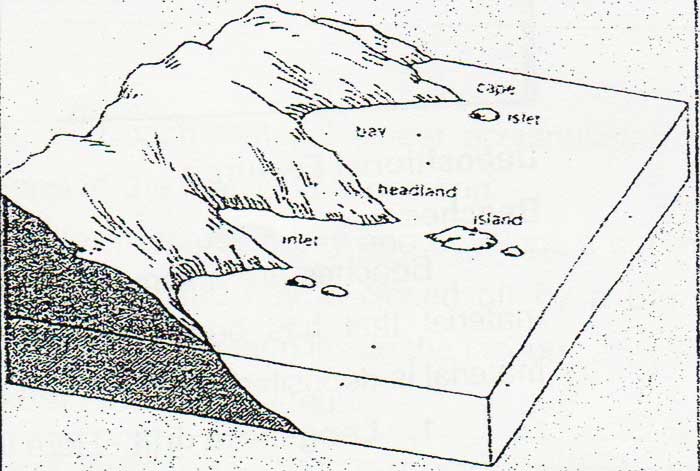
1. Capes and Bays: On exposed coasts, the continual action of waves on rocks of varying resistance causes the coastline to be eroded irregularly. E.g. granites and limestones, occur in alternate bands with softer rocks e.g. sand and clay. The softer rocks are worn back into inlets, cover or bays and the harder ones persist as headlands, promontories or capes.
2. Cliffs and wave-cut platform: Generally any very steep rock face adjoining the coast forms a cliff. The rate of recession will depend on its geological structure, their resistance to wave attack. If the beds dip seawards, large blocks of rock will be dislodged and fall into the sea. Some as a cliff recedes landwards under the pounding of waves.
3. Cave, arch, stack, and stump: Prolonged wave attack on the base of cliff excavated holes in region of local weakness called caves. When two caves approach one another from either side of a headland and unite. Further erosion by waver will ultimately lead to the total collapse of the arch. The seaward portion of the headland will remain as a pillar of rock known as a stack.
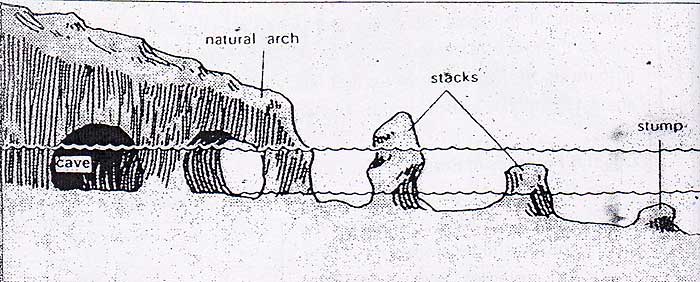
Depositional Features
Beaches: Beaches are a common feature of a coastline. Beaches are made up of eroded material that has been transported from elsewhere and deposited by the sea. The material is deposited in distinct ways.
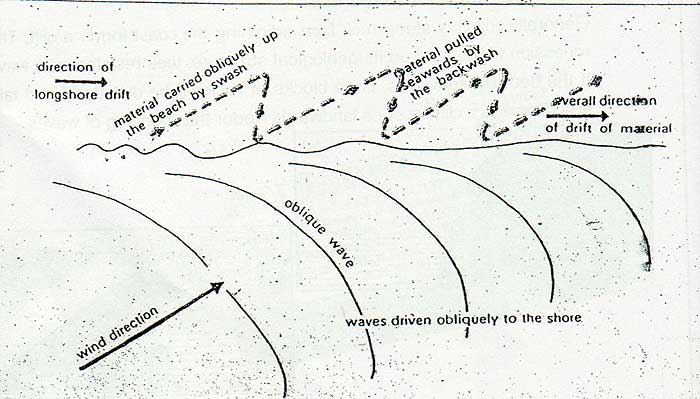
1. Longshore drift - Here the material is deposited obliquely to the coast.
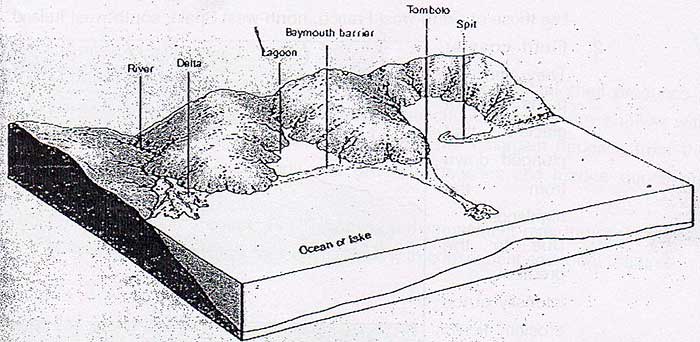
2. Backwash - Here the material is removed backwards through
backwash.
Spits and Tombolo: A sand spit is an extended stretch of beach material (linear
accumulation of sediment) that projects out to sea and is joined to the
mainland at one end.
Over time, the spit grows and may extend across a bay and develops
a curved hook if wind direction changes further out. When the bay is
closed off by a bar it becomes a lagoon. Later mud flats or salt
marshes may form inside the lagoon. A tombolo is a spit connecting an
island to the mainland.
TYPES OF COASTS
Coast of Submergence
1. Ria coasts: During the Ice Age a great deal of water was locked up in ice. The warmer climate that followed melted much of the ice. Subsequently there was an increase in the waters of the oceans and the sea level rose appreciably. In upland coastal regions where the mountains run at right angles to the sea, that is transverse or discordant to the coast, a rise in the sea level submerges or drowns the lower parts of the valleys to form long. A Ria coast is typical of the Atlantic type of coast like those of north-west France, north-west Spain, south-west Ireland.
2. Fiord coasts: They mark the paths of glaciers that plunged down from the highlands. Due to the greater intensity of ice erosion fiords are deep for distances inland but there is a shallow section. E.g. Norway, Alaska, British Columbia, southern Chile and the South Island of New Zealand.
3. Dalmatian coast: This is the longitudinal coast where mountains run parallel or concordant to the coast. E.g. coast of Dalmatia Yugoslavia along the Adriatic Sea.
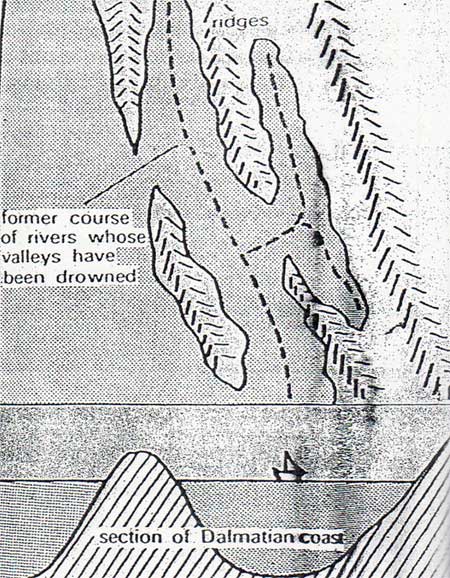
Coastlines of Emergence
1. Uplifted lowland coast: The uplift of part of the continental shelf produces a smooth, gently sloping coastal lowland. The offshore waters are shallow with lagoons, salt-marshes and mud-flats. Where the emergent deposits from the continental shelves are sandy gravelly, beaches and marine dunes are formed.
2. Emergent upland coast: Faulting and earth movement may thrust up coastal plateau so that the whole region is raised, with consequent emergent features.
data-matched-content-ui-type="image_card_stacked"
Useful Tips & Articles
तैयारी कैसे करें? |
EXAM SUBJECTS |
STUDY RESOURCESDownload Free eBooks |


